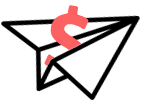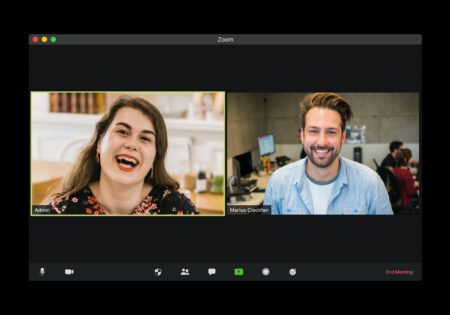A client meeting could be one of the most daunting and nerve-wracking experiences in your life, especially if it’s your first one. However, it doesn’t have to be.
When you go into the battlefield unarmed, that’s when all hell breaks loose. But if you prepare and bring all the necessary weapons to fend off against the enemies, then that’s where you’ll be triumphant.
The same goes for client meetings. If you want to ace your first client meeting, then do these preparations and tips so you can conquer and wow your prospects.

Get Weekly Freelance Gigs via Email
Enter your freelancing address and we'll send you a FREE curated list of freelance jobs in your top category every week.
How to Prepare for Your First Client Meeting
Preparing for a client meeting doesn’t have to involve heavy lifting. More often than not, you have all the information right at your fingertips. Getting the meeting in the first place is a big win, and using an appointment scheduler can help you manage your meetings. But now that you’re ready, here are a couple of steps to prepare for it:
Do your due diligence on your potential client
As with anything in life, you have to investigate who you’ll be talking to. Typically, your attendees are big-time decision-makers in the company. That means they are the VIPs in a company and they call the shots. That said, everything you say matters!
Ensure that you know them by heart. For example, you can check their LinkedIn profiles or social media accounts. This is to determine what their advocacies and interests are, who they are affiliated with, or better yet, what they’re saying about their current business.
Then you can build your proposal around it. You don’t have to kowtow to them. But the step is crucial to ensure that you’re not stepping over the line especially when it comes to their values and principles.
Determine your goal and objective
The goal is the primary end result you want to achieve from the client convention. On the other hand, the objective is how you plan to reach that goal. For instance, if you’re booking your first client meeting to generate funding for your proposal, then make sure your agenda does just that.
How? It’s simple. Determine your attendees’ pain points. Always remember that this meeting shouldn’t be about you. It should be all about your attendees.
After all, they came to the meeting hoping to benefit something from it. That said, determine their pain points and make sure you offer a way to resolve them.
Always link benefits to pain points. If you’re offering your services to streamline their work processes, you can ask thought-triggering questions like these scripts from HubSpot on hiring processes:
- “Do you feel like you have the internal resources and processes necessary to fill positions quickly and with the right quality talent?“
- “How do you feel about the amount of time it currently takes you to fill open positions?“
- “How important is it for you to decrease the amount of time you spend interviewing?“
Create an agenda
Planning your agenda beforehand is always recommended so you don’t get sidetracked from the most essential discussions. Always start your proposal by mentioning issues that your attendees are currently experiencing.

Then you can create your agenda around that. Offer product or service features and benefits. Jotting down your agenda will also prevent getting lost along the way.
During the meeting, expect that your attendees will ask a lot of questions. Of course, it’s professional to answer them but having a guide will nudge you to go back to the main issue at hand.
Plus, having an agenda means you’re 100 percent prepared for the client meeting, which will make you more confident.
Have a contingency plan
We hope this doesn’t happen to you, but in some cases, your client meeting could go south – and I mean way down south. Your attendees could get bored, disinterested, or lack focus because they don’t see your unique value proposition.
When this happens, always have a plan B. Whether it’s an interactive game or a compelling story, always try to capture your audience’s attention. This is the only way you can get back on track.
Wrap-up and follow-up
You should always wrap up your meeting. This is to summarize every important point that you mentioned. Make sure they realize in the end what benefits they’re getting.
Last but not least, don’t forget to follow-up. It’s recommended to follow up within the first 24 hours after the meeting for more positive results.
10 Tips for a Successful Client Meeting
After you’ve done all the prepping for your first meeting, it’s time to rock it! Here are some easy tips you can do:
1. Be time conscious
In Japanese business culture, if you’re on time, you’re late. That’s why the Japanese businesspeople ensure they arrive five to 10 minutes before the said time. Being punctual says a lot about you. Therefore, ensure that you’re not even a minute late. Be there an hour before the meeting so you can set up your presentation slides or projector if any.
Being time conscious means you care about your attendees. The last thing you want is to make your clients wait. Always make a first good impression by arriving early. Moreover, being on time means you’re also thoughtful about your clients’ busy schedules.
When we say be time-conscious, we don’t only mean arriving early but also ending the meeting on time. Don’t drag the meeting for too long and be sensitive to your attendees’ time as well.
This is the reason why the next tip is very important to start and end the meeting on time.

2. Stick to your agenda
Never get sidetracked from the agenda. Stay focused and talk about the necessary things. If you do get sidetracked, politely say you need to go back to the main topic. This is why it’s crucial to plot your agenda on paper.
Although you’re planning to prepare a visual aid during the client meeting, having a copy printed is also as important. You can consider your own hard copy as your “cheat sheet.” This is where you can jot down short notes to remind you to stay on track.
3. Always stay focused
As mentioned, staying focused means you’re not wasting anyone’s time. You want your first meeting to be productive, regardless of the results. That said, focus only on the most important topics. It’s okay to engage in small talk but keep it minimal.
That said, never ignore when your clients engage in small talk. Small talk is good at breaking the ice. And when you enter a room and create this rigid and hostile atmosphere, you’ll never get in the good graces of your clients. Make sure that you let them warm up to you during the initial phase of the meeting, so everything will go smoothly.
4. Prepare a script
Unless you’ve done client meetings a couple of times before, then you no longer need to have a script ready. But if you’re organizing a client meeting for the first time, then a script would be really handy.
Forgetting what to say or totally getting tongue-tied is inevitable, especially when you’re nervous and you get hawk-like stares from your attendees.
And trust me, they will stare and scrutinize you from top to bottom. So everything you say matters. Having a script means you can guide yourself from the top to the end of the meeting.
Ensuring you have a smooth transition from one agenda to another is crucial, instead of jumping from one topic to a far-off topic next. Always keep a script ready so there is no awkward silence in the room.
5. Dress to impress
Always dress the part. These are important decision-makers in a company so it’s crucial to make a great first impression. Be professional by looking your best. No VIP, CEO, or important decision-maker in a company will ever believe you if you come into the meeting with a pair of jeans and flip-flops.
You only have to undergo a few “firsts” in your life, and your first client meeting will be one of the few that you’ll never forget. So ensure that you make it count.
Rent a suit and tie if necessary. Better yet, invest in a pair of suits and pants. After all, you might have several meetings after the first one.
6. Be interactive
There’s nothing more boring than talking for an entire hour without involving your attendees. Be interactive and ask them questions once in a while to check if they’re still keeping up with you.
Imagine a classroom where a teacher talks for two hours. Do you think the students listen for the entire two-hour class? More often than not, listeners tend to get bored especially when it’s a one-way conversation.

The same concept applies to client meetings. Your clients will remember a fun and exciting meeting over dull and boring ones. Make sure to involve them every step of the way. If you have to do a fun trivia or quick game just to grab their attention, then, by all means, do it.
Ensuring that your attendees are all ears also increases the possibility of making them sign on the dotted line.
7. Mention their pain points
For a successful client meeting, always mention their pain points and connect them with how you can help resolve it. Build your agenda or proposal around your clients’ problems. Remember, the meeting should not be about you. But the meeting should be about your clients.
Just like in marketing, brands strive to work around their customers’ pain points so they can position their value proposition better. In your case, mention what challenges your clients are facing. This is so you can position your offers the right way. Mention features, but expound on the benefits.
8. Start with an anecdote or short story
To hook your clients during the first phase of the meeting, experts suggest starting with a funny story. This is so you can quickly establish a lighthearted atmosphere. You don’t want a very stiff meeting. Make it friendly, witty, or humorous, but valuable.
Starting with an anecdote or a relevant short story will also make your clients realize what they’re in for. After you’ve finished your storytelling, make sure to mention the overview of why you’re in the meeting in the first place.
9. Share credible facts
One way to make your clients listen to you more is if you share credible facts about you or your achievements. Whether you mention where you graduated or enumerate all your achievements and awards, these facts will add to the credibility factor.
And we all know how important this is during a client meeting. Standing in front of clients while presenting your products or services means you’re selling yourself. And the best way to establish credibility is to show some success stories, recognitions, and whatnot.
10. Keep calm
Whatever you do, always stay calm. It’s normal to feel nervous especially in front of bigwigs. If it’s your first client meeting, maybe it helps if you meditate for a few minutes just to relax the mind and calm the senses.
Moreover, don’t panic when everything goes haywire. Always keep your cool and never lose focus. This goes to show how professional you are and how you can handle the pressure. If you feel that you REALLY need a few minutes to regroup, excuse yourself to drink water and come back immediately.
Ready for your meeting?
A client meeting will only be successful with a call to action. Without it, the attendees won’t know what the next step is. As with any marketing campaign, your strategy will never work without a call to action.
A few examples could be getting your clients to visit your website, letting them subscribe to your newsletter, scheduling a one-on-one demonstration, or the topmost goal would be to get clients to purchase more of your offerings.
As a bonus idea, you could send them a thank-you gift for their time and the opportunity. This can go a long way and is such a small gesture.
When you’re wrapping up your first client meeting, make sure that you cover the most important points in the meeting. This is so your clients won’t forget any of the most essential parts. Then finish it up with a call to action to urge them to do the next stage.
Do your due diligence, come prepared, and you’ll do great!
Keep the conversation going...
Over 10,000 of us are having daily conversations over in our free Facebook group and we'd love to see you there. Join us!



